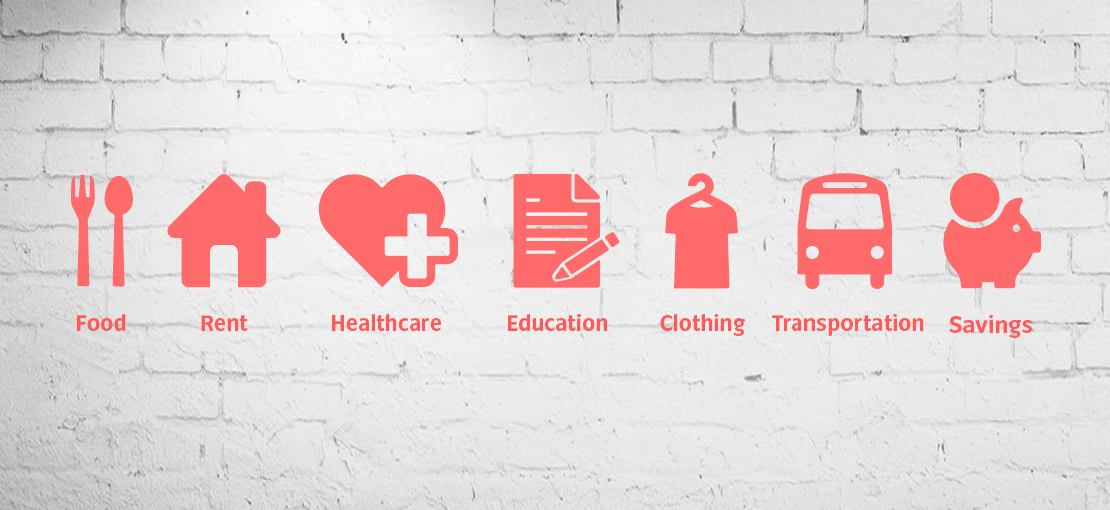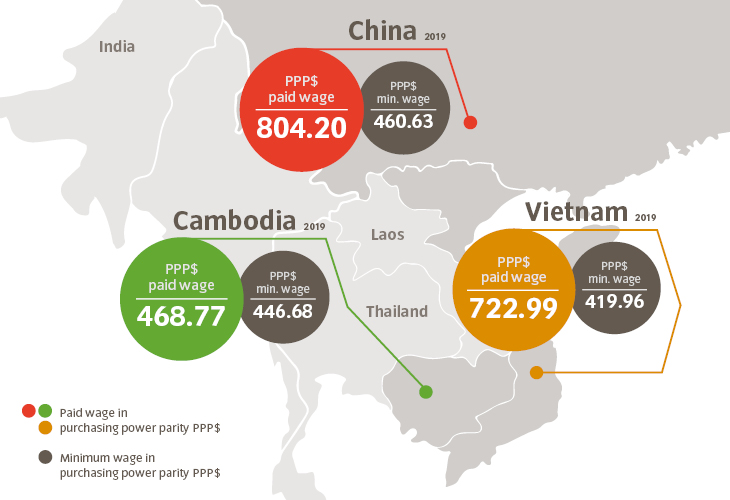
Fair wages for your VAUDE products
In order to implement this at our production sites, we obligate each of our producers to pay a living wage. The obligation is as follows:
Wages and benefits paid for a standard working week shall meet or exceed legal or industry minimum standards and always be sufficient to meet basic needs of workers and their families. In addition, some discretionary income (i.e. for savings) must be provided. Overtime must be remunerated separately, with the statutory surcharges. Other legal wage components such as paid vacation and holidays or special wages for the Chinese New Year must be guaranteed.
An obligation in and of itself is not enough, of course. Therefore, all our producers are regularly monitored by independent FW auditors who carefully examine the remuneration of employees. This is done by checking payroll records and working time records. Interviews with workers are conducted for confirmation. VAUDE receives a detailed list of payment figures with local and international benchmarks. This helps us to quickly recognize the wage levels of our producers and whether we need to take action.
Results of the Fair Wear (FW) audit
Inspections carried out by Fair Wear show that our producers have high wage levels that are far above the statutory minimum. Nevertheless, at all audits carried out in 2019, there were objections regarding "payment of a living wage", and deviations from the Asia Floor Wage were uncovered. This benchmark is being advanced because the minimum wage in many countries is not sufficient to provide a decent standard of living.
Our producers have high wage levels. You're surely wondering why there were deviations from the AFW. The AFW always refers to the country as a whole; regional differences are not taken into account. However, the regional differences in the cost of living are significant. For this reason we have decided not to use the AFW for our comparisons. Meaningful benchmarks for living wage are, unfortunately, still not available for all countries and regions, which is why we have joined various working groups for the establishment of a living wage to actively promote the issue.
Producer's payments
Production Site Wages

Wages at our production sites in Vietnam:
We are already a step ahead in Vietnam where there has been a new benchmark for fair wages since 2017. This was increased by the Global Living Wage Coalition (GLWC) using the anchor method. Where the Anker Benchmark is available VAUDE commits to the Anker Benchmark. Read more here. This benchmark applies to Region 1 and Region 4. For regions 2 and 3, we have extrapolated the benchmark in proportion to the minimum wages. Since the anchor benchmark only exists for 2016, we have adjusted it for subsequent years using the annual inflation rate.
You can find wages of production sites in Vietnam that were audited in 2019, in relation to minimum wage and the anchor benchmark for fair wages here.
We've decided to represent wages in PPP$ rather than local currency. Why?
Wages in different countries of production can’t be compared if they're listed in the local currency because it is never clear how much things cost there. For this reason, we have converted wages and minimum wages into their purchasing power. We have used the World Bank's conversion factor.
Wage data is collected by FW in audits. We do not have figures on the starting wage per department. FW only collects the lowest, highest and most frequently paid wages in a department. The wages represented here are average pay for the most common job in the sewing department.
Because each producer is generally audited every 3 years, we also only have updated data on wages every 3 years. Last year we began collecting annual wage data from all producers. The evaluations haven’t been published yet because the results have to be verified first.
Our Commitment

»Fair wages continue to be a challenge. VAUDE is working intensively on the issue and is committed to FW’s Living Wage Incubator Project.«
The issue of a living wage can't be solved by VAUDE alone. We are just one of many customers at these production sites. Therefore, we are working hard on the issue with other brands and Fair Wear. We are also working with our producers to find joint solutions in order to make progress. In addition, we create the conditions / foundation for fair wages – we pay fair prices for our products and treat our partners fairly over the long term.
| GRI: | 202-1 |




